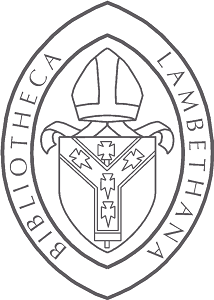Today we are excited to present a guest post from Dr Ceri Law, AHRC Postdoctoral Research Associate for the Remembering the Reformation project based at the Universities of Cambridge and York.

This, then, was a major cultural event, and anything that helps people to become interested in and learn about the past and the place that religious change played in history is, I think, very much to be welcomed. However, there is a danger that in remembering 31 October 1517 we forget a lot else, and this is what this blog post is about. Here I want to focus on one item from Lambeth Palace Library which features in a digital exhibition prepared by ‘Remembering the Reformation’, the Arts and Humanities Research Council funded project, based at the Universities of Cambridge and York that I work for (you can find out more about the project at our website: https://rememberingthereformation.org.uk/, and you can find the digital exhibition at https://exhibitions.lib.cam.ac.uk/reformation/).
 This is a striking woodcut showing the execution of the Czech theologian Jan Hus at the Council of Constance in 1415. Surrounded by flames and made to wear a cap covered with devils, marking him out as a heretic, this, as the Latin caption tells us, is Hus ‘while he gave his own body to be burned for Christ’. It is part of a late sixteenth-century text which celebrates Hus and his follower, Jerome of Prague (also executed as a heretic at the Council of Constance) as martyrs.
This is a striking woodcut showing the execution of the Czech theologian Jan Hus at the Council of Constance in 1415. Surrounded by flames and made to wear a cap covered with devils, marking him out as a heretic, this, as the Latin caption tells us, is Hus ‘while he gave his own body to be burned for Christ’. It is part of a late sixteenth-century text which celebrates Hus and his follower, Jerome of Prague (also executed as a heretic at the Council of Constance) as martyrs.

We get some sense of what Hus meant to later generations of reformers if we look at the owner of this book, John Whitgift (c. 1530-1604), who became Archbishop of Canterbury in 1604 (we know that this book belonged to Whitgift because, like many other books in Lambeth Palace Library, it was bound in his arms). In one of his works Whitgift noted that ‘Master Hus, Hierome of Prague, &c, were stirred up even by God to preach his truth, and open the door of his word again’; in this he was expressing a very common Protestant view. In the famous Acts and Monuments of John Foxe (The ‘Book of Martyrs’), too, Hus is celebrated as a proto-Protestant martyr. Like John Wyclif (d. 1384) in England – sometimes described as the ‘Morning Star’ of the Reformation – Hus could be used as evidence of a Protestant history that extended back beyond 1517.
Admittedly, this commemoration of Hus was itself often part of the celebration of Martin Luther. Part of Hus’s importance for later reformers was the role he was supposed to have played in predicting Luther. It was claimed that Hus had declared before his death that another reformer, one that the Catholic Church would not be able to silence, would come 100 years after him. For Luther the 102 years between this and 1517 was close enough (on this see another item in the exhibition, a Lutheran timeline, which has been researched by my colleague Dr Bronwyn Wallace). The celebration of Hus was also part of efforts to answer a constant Catholic criticism of the reformers: ‘where was your church before Luther?’. Having, and commemorating, a history was part of the claims to legitimacy made by various Protestant groups.
But thinking about Hus can also help us, too, to remember the Reformation – and to do so in a way that questions the centrality of Luther and 1517. Hus reminds us that there had been movements that challenged the ideas and authority of the Catholic church long before Luther. The idea of Luther as the start of something new, as a decisive break with the past is a very influential one, but it’s an idea that we should question. The Lutheran Reformation was of huge significance, but it didn’t mark a neat dividing line, as was once suggested, between ‘medieval’ and ‘modern’.

